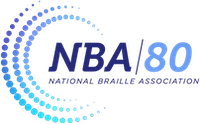claurent
Forum Replies Created
-
AuthorPosts
-
claurent
ParticipantSorry for the delay in responding.
While I, personally, agree with you, you will notice that the word likeable uses the ea contraction...so I think they are correct according to UEB rules.
Cindi
claurent
ParticipantOne more question about this, if I may!
In the expression AA'BB'CC', I will use the capital word indicator before the first A. Does the prime sign terminate the capital indicator, therefore requiring me to repeat the cap word indicator after each prime symbol?
Thanks Cindi!
claurent
ParticipantThis was the suggestion I received. I do not know if it would cause a conflict with the music code.
I would not use the circumflex modifier over a number. I do believe it is intended only for letters. What you can use is the "hat over previous item" (dots 5, 156). This is discussed in the Guidelines for Technical Material, section 12. It is used with numbers and even with letters in a technical context. Unlike the accent/modifier signs, it is placed after the digit or letter.
Hope this helps!
Cindi
claurent
ParticipantThe grade 1 indicator would only be required if the letter is standing alone. With the prime attached, they are no longer standing alone...so no, a grade 1 indicator would not be required.
Cindi
claurent
ParticipantHi Cindi. Thanks for the reference to the parallelogram. As shown in Guidelines for Tech. Material, p. 65, the symbol for the parallelogram would be preceded by the shape indicator (1246). Still, dot 4 is a UEB prefix, and it really shouldn't be used in a non-UEB way in literary text.
Just to clarify, "scale degree" is a fundamental concept in music theory, but the caret and number are literary symbols, not music symbols.
I previously thought we could use the caret symbol (4)(26), but UEB (p. 24) refers us to Section 4.2, for a circumflex above a letter. The caret symbol seems to be reserved for indicating insertion of text.
Many of these numbers (all with the ^ above) often appear in hyphenated sequences, e.g., 4-2, 1-2-3-4, and even longer sequences. UEB modifiers cannot be doubled, and the grouping indicators (126)(345) also don't seem applicable. The two-cell symbol for the circumflex would need to precede each number.
Does the UEB circumflex (45)(146) mean anything else when followed by a plain, one-digit number?
-Ed
claurent
ParticipantA dot (4)(3456)(145) represents a parallelogram...so I don't think you could use (4)(3456) for the music issue. I am not a music transcriber so I'm afraid I don't have any other suggestions for you. I would suggest you contact the BANA music committee chair.
Cindi
claurent
ParticipantThanks Cindi. It is literary; I'll specify next time.
Fredclaurent
ParticipantI agree! Thank you, Cindi. I'll contact BANA.
Peggyclaurent
ParticipantTo be honest, if I came across the examples in 11.3.4, I would do them in Nemeth. But 11.3.1, 11.3.2 and 11.3.3 could all apply to literary materials. As could 11.2, 11.4.2, 11.6 and 11.7. Does that help?
Cindi
claurent
ParticipantI should have known it was not that simple! Lol.
claurent
ParticipantThere is no such thing as a diacritic hyphen in UEB. According to UEB rules, you follow print for the symbol used between syllables.
The UEB primary and secondary stress marks are in Section 15.2 of the UEB codebook.
Cindi
claurent
ParticipantCindi, Glad I asked. Thank you.
claurent
ParticipantThe BANA Formats committee is proposing using hyphens in diacritics regardless of the print symbol used. However, that is NOT yet approved. You could, in this instance, replace the bullets with a hyphen and have your TN state that. As long as you are clear to the reader what change you are making to the print.
Cindi
claurent
ParticipantThank you Cindi.
claurent
ParticipantLike this:
[simbraille],c;5#b,h;5#e,o,h[/simbraille]
The grade 1 indicator is required before the subscript indicator.
Cindi
-
AuthorPosts
